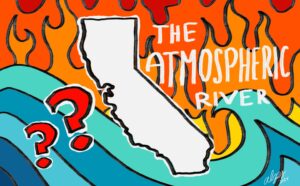
Cars contribute significantly to pollution by releasing carbon monoxide and other harmful gasses into the atmosphere, leading to respiratory issues, hazy skies, and physical fatigue. As humans, we must interact with the outdoors for the sake of our mental and physical health. So, we must use more public transportation. Or at least consider carpooling more frequently.
The benefits of the majority using public transportation can’t be underestimated: improved environmental health, economic growth, and potentially even better mental health through social interactions. So why aren’t transit systems more popular in the U.S., and why are Americans hesitant to use them?
It’s often easy to blame the car and oil industries for the decline of public transit. General Motors, for instance, is widely believed to have played a crucial role in reducing streetcar use in favor of highways. However, public perception also significantly impacts transit use—many people simply prefer the convenience of driving over the inconvenience of using public transportation. Not all public transit challenges are tied to oil interests.
In the U.S., transit systems often face challenges like limited service, safety fears, unreliable schedules, breakdowns, and high fares that seem overpriced for what commuters are getting. All are controlled by agencies whose priorities may not always align with commuters’ needs. It’s understandable why so many people choose to rely on cars.
But why would many environmentally conscious people choose public transit to reduce their carbon footprint? For many people, their safety comes first, understandably. There’s concern about issues like shootings, robberies, and other incidents on public transportation, keeping many people on highways instead of public transit.
For mass transit to thrive and create a cleaner environment, all levels of government from local to federal- should invest in better, more accessible systems. Our daily commutes shouldn’t come at the cost of polluting the air or forcing us to give up eco-friendly, engaging spaces for safe travel. We should feel comfortable and confident sharing public transit spaces with others.
Yes, problems like these tie into bigger social issues that won’t be resolved soon. But at the least, people should have a safe, clean alternative to driving within their neighborhoods. Plus, when they have better options, even those who drive can appreciate the reduced traffic.
Works Cited:
Car emissions and global warming. Union of Concerned Scientists. (n.d.). https://www.ucsusa.org/resources/car-emissions-global-warming
Public transportation facts. American Public Transportation Association. (2023, September 28). https://www.apta.com/news-publications/public-transportation-facts/
Gallagher, K. (n.d.). How much air pollution comes from cars?. TreeHugger. https://www.treehugger.com/cars-are-causing-air-pollution-we-breathe-new-study-finds-4856825
Millington, A. (2021, November 28). Major challenges facing the US Transportation System – North American Transportation Services Association. NATSA. https://mynatsa.org/major-challenges-facing-the-us-transportation-system/
Aecom. (n.d.). Mind the gap: The future of mass transit systems. Lost in transition? AECOM – Future of Infrastructure. https://infrastructure.aecom.com/2020/mind-the-gap-the-future-of-mass-transit-systems
Henricks, M. (2010, September 2). The GM trolley conspiracy: What really happened. CBS News. https://www.cbsnews.com/news/the-gm-trolley-conspiracy-what-really-happened/
The views and opinions expressed are those of the authors and do not necessarily reflect nor represent the Earth Chronicles and its editorial board.









